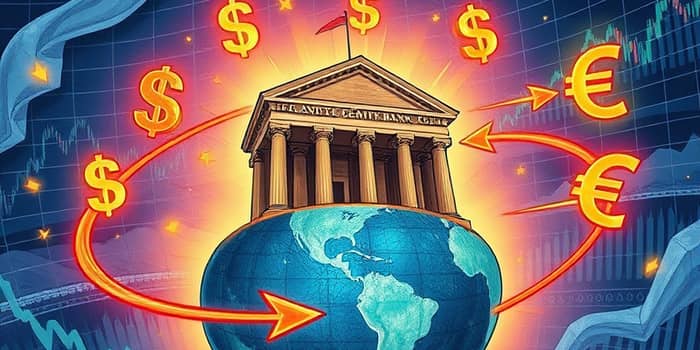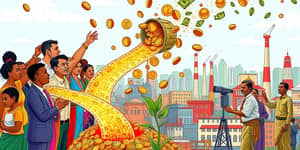
Interest rate gaps between nations drive powerful shifts in forex markets, influencing international investment and trade.
At its heart, an interest rate differential refers to the difference between central bank lending rates of two countries. This spread forms the backbone of currency valuation dynamics.
Currency valuation itself describes the price of one currency relative to another, commonly expressed through exchange rates. Changes in these rates impact the purchasing power of imports, exports, and cross-border investments.
Central bank policies and interest rate changes create forces that shape forex markets. Key channels include capital attraction, carry trades, and market expectations.
When Country A raises rates above Country B, its currency often appreciates against peer currencies. Conversely, lower or falling rates can trigger depreciation and capital outflows.
The 2019–2023 period illustrates these dynamics vividly. In the United Kingdom, 3-month interbank rates climbed by 4.15 percentage points, while in the United States they rose by 3.06 points. Japan’s rates, by contrast, remained near zero with a mere 0.06-point uptick.
These shifts fueled volatility: the pound strengthened against low-yield currencies, and the U.S. dollar rallied post-pandemic as the Federal Reserve hiked rates aggressively. Emerging market currencies, lacking supportive rate differentials, often weakened under similar pressures.
Interest rate differentials do not operate in isolation. Several broader economic and political factors can amplify or dampen their effects.
Other considerations—such as unemployment figures, overall economic growth, and fiscal policy decisions—can moderate how rate differentials impact exchange rates.
For forex traders, closely monitoring central bank announcements and yield curves is essential. Strategies such as the carry trade rely directly on stable or widening rate differentials.
Businesses engaged in international trade can hedge currency risk more effectively by understanding anticipated rate moves and their likely impacts on exchange rates.
Policymakers must balance rate decisions against broader economic goals. While higher rates may support the currency, overly aggressive tightening can stifle growth and invite political backlash.
In an interconnected global economy, a central bank’s rate choice resonates far beyond its borders. By appreciating how interest rate differentials shape capital flows and currency valuations, market participants and decision-makers can navigate the financial landscape with greater confidence and foresight.
References













